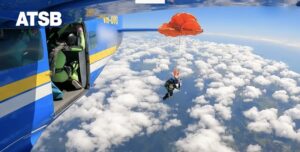In 1959, nine students went on a skiing trip in Russia’s Ural Mountains and never returned. Searchers found their bodies scattered a variety of distances from the tent, which had been cut open from the inside. The deceased skiers were in varying states of undress, without shoes, with traces of radiation on their clothes, and all with different injuries: a crushed skull, broken ribs, missing eyes, and a missing tongue. It was the stuff that conspiracy theories are made of.
For more than half a century, people have analyzed, speculated, theorized, and opined about what happened that mysterious night. Notions have ranged from avalanches, animal attacks, and murders by locals to wild hunches about a nuclear weapons test, KGB spies, yetis, and UFOs. All these theories offer what-ifs, but no one has definitively solved the mystery of Dyatlov Pass.
Till now, perhaps. Sixty-two years later, scientific modeling has yielded a plausible explanation.
The Swiss research team of Johan Gaume of the Snow Avalanche Simulation Laboratory and Alexander Puzrin of ETH Zurich, a research university, have published a paper in the prestigious journal Nature concluding that a very small avalanche could have been at fault. At the very least, any explanation that involves equations like the ones below has to be taken seriously.

Part of the authors’ explanation of how an avalanche could occur on such a low-angle slope.
The avalanche explanation has been advanced many times before, including by Russian government investigators in 2019 and 2020, but they offered no scientific explanation about how this might have happened. The mountain, called Kholat Saykhl, on which their tent sat was relatively gentle, just 28˚, and avalanche terrain generally begins on 30˚ slopes and steeper.
The rescue team also found few avalanche signs, and the injuries seemed inconsistent with those of avalanche victims. And if there was an avalanche, it happened about nine hours after the skiers set up camp.

The group prepares their tent. Photo: Dyatlov Memorial Foundation
Puzrin found the nine-hour delay particularly intriguing. He had previously published a paper explaining how an earthquake can lead to an avalanche hours later. He and Gaume created computer simulations and models to try to replicate that night. They concluded that even though an avalanche was unlikely under normal conditions, a combination of unusual factors might have created a small snow slab avalanche that could explain the various bizarre injuries.
The initial investigation described an underlying weak snow layer at the site that overlying snow might move over. In their journals, the group also mentioned strong winds. Yet the possibility of an avalanche had often been dismissed because the snow buildup wasn’t enough, and no snow fell the night of the accident.
But the simulations suggested that strong katabatic winds could easily have brought large masses of snow down toward the campsite. The skiers also destabilized the slope when they cut into it to create a platform for their tent. Together, those conditions could have triggered a small but fatal slide.
The Swiss researchers’ conclusions about this bizarre mystery came from an equally bizarre place –- the CGI coding used for snow animation in the 2013 Disney movie, Frozen. The movement of the snow in the movie so impressed Gaume that he met the specialist who had worked on the film’s special effects. He then modified the coding to simulate the ways that avalanches could impact the human body.
To get realistic values for inputting the coding and animation equations, they used research on car crashes. In the 1970s, General Motors broke the ribs of a hundred cadavers, using different weights and velocities, to see what happened in car crashes and thus to improve seatbelt safety. Some of these bodies had rigid supports, others did not. The skiers on Kholat Saykhl slept on top of their skis in the tent — these would have acted as a rigid platform when the avalanche hit.

Zinaida Kolmogorova, one of the skiers, found buried in the snow. Photo: Russian National Archives
The computer modeling showed that a five-metre block of snow, in this very specific situation, could in fact break ribs and skulls. These injuries would eventually be fatal, but the victims would not die immediately. They would have time to cut open the tent and flee. The differing severity of injuries would determine how far a particular individual made it from the site of the accident before succumbing to hypothermia.
Others have quickly weighed in on the research. Geohazards expert Jim McElwaine of Durham University in England is not convinced that a small avalanche could lead to such injuries. He believes that the snow would need to move faster than it could achieve on that slope to do so.
Pat Morrow, a Canadian photographer and the first person to complete the climber’s version of the Seven Summits, remains dubious. “I’ve never heard of anyone running away from their tent after it was hit by an avalanche,” says the lifelong mountaineer. “The natural reaction is to unbury and try to get warm.”
Other professional climbers think it reasonable that snow slabs could lead to blunt trauma injuries. One also wonders why the radiation traces on the victims’ clothing has been disregarded completely. Dyatlov Pass is not far away from the secret city, known then as Chelyabinsk-40, where the Soviets built their first atomic bombs. Two years before the skiers’ fatal outing, the world’s largest nuclear accident (until Chernobyl), called the Kyshtym disaster, occurred at that plant. Dyatlov Pass is a little further north, but radiation was endemic in the 1950s in that part of the Urals.
Gaume and Puzrin admit that they have not tried to explain everything that happened that night. But this is by far the fullest, most scientific explanation to date of what might have happened at Dyatlov Pass.






